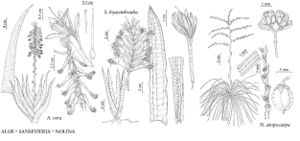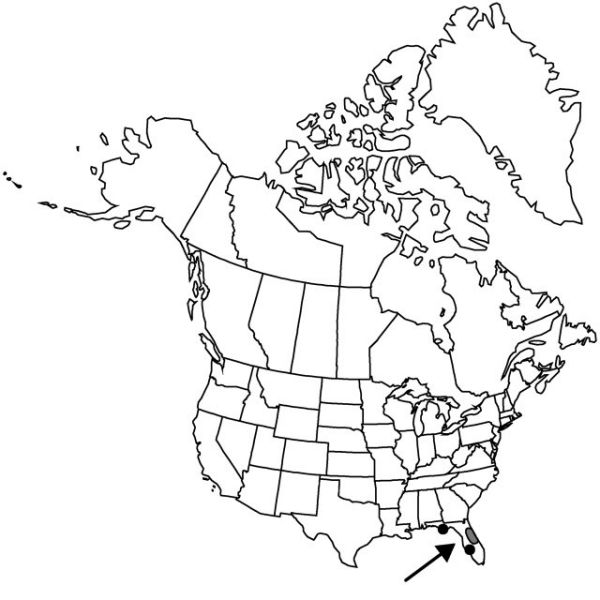Nolina atopocarpa
Rhodora 11: 81. 1909.
Plants acaulescent, cespitose; rosettes from bulblike bases, with vertical, subterranean caudices. Leaf blades wiry, lax or stiff, grasslike, flattened, 45–85 cm × 1.5–4.5 mm, not glaucous; margins serrulate, with close-set, cartilaginous teeth, rarely entire; inflorescence leaf blades 1.5–6.5 cm. Scape 2.5–6 dm. Inflorescences racemose, sometimes branched, 6.5–9 dm × 0.7–2.8(–20) cm; bracts caducous, 1.5–3.5 mm, apex acute, fragile. Flowers: tepals 1.3–2.5 mm; fertile stamens: anthers up to 1 mm; pistil not ridged; pedicel recurved in age, not dilated, proximal to joint 1–1.5 mm, distal to joint 1.2–2 mm. Capsules asymmetrical, rounded, inflated, 4–4.5 × (3.5–)4–5.5 mm, tapering at base. Seeds closely invested in capsule, rounded, 3–4.1 × 2.4–3.2 mm.
Phenology: Flowering summer.
Habitat: Sandy loam, often with peat in pine flatwoods
Elevation: 0–50 m
Discussion
Nolina atopocarpa is fire-tolerant and possibly fire-dependent. It is found primarily on the east side of the Apalachicola River in Liberty and Franklin counties and scattered counties in eastern Florida. The plants are extremely rare and are listed as endangered by the state of Florida.
Selected References
None.

